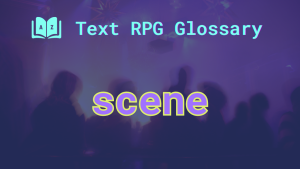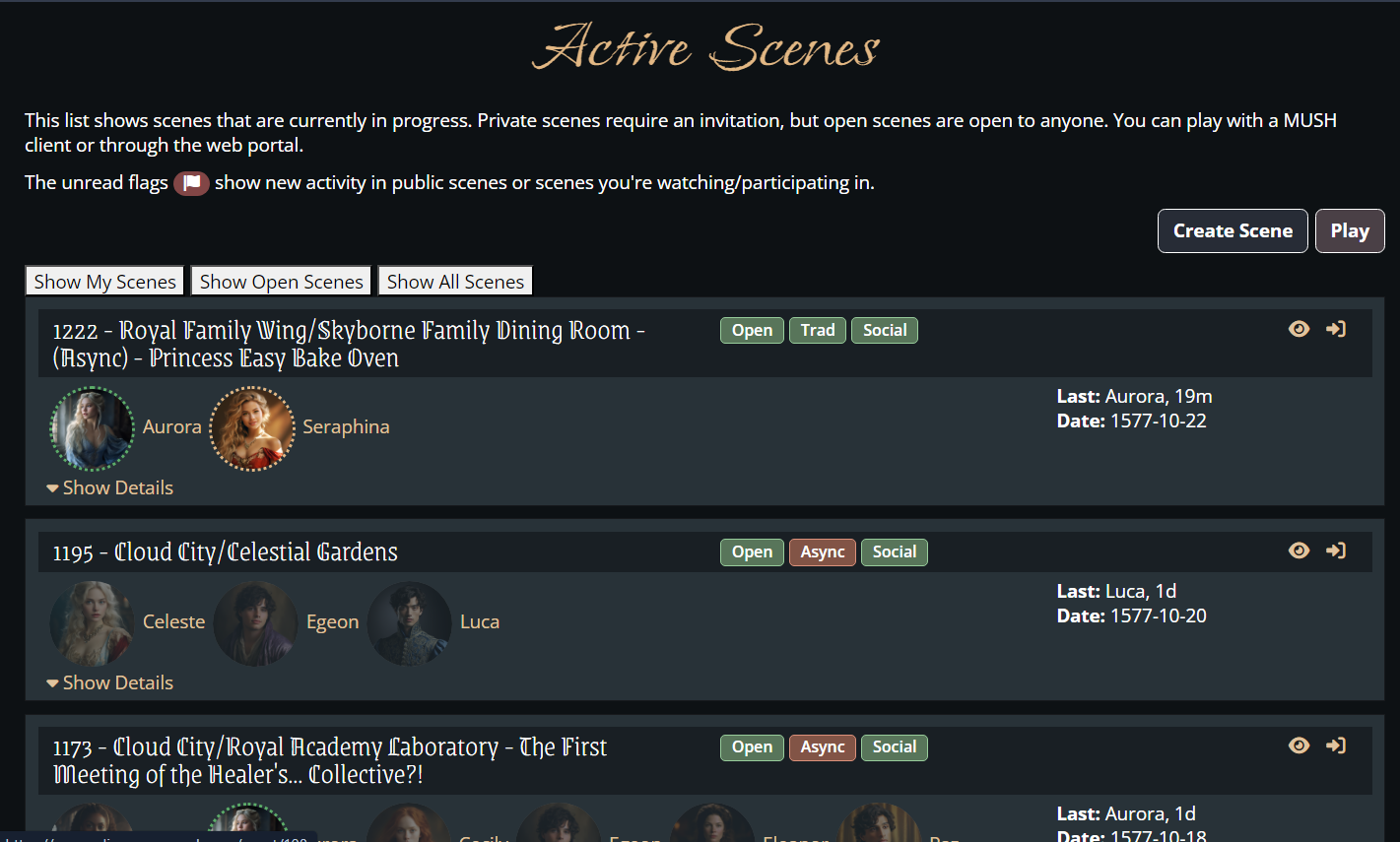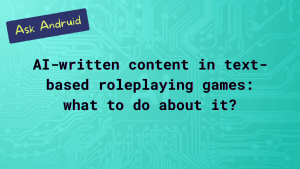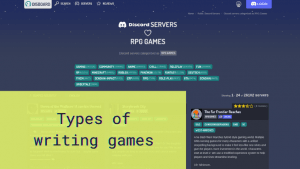What is an RP scene?

A roleplay scene in text-based roleplaying games (RPGs) is a chunk of the story where characters interact with each other or their surroundings. Each scene usually (but not always) has a specific setting and a clear purpose, like solving a problem or moving the plot forward.
Scenes are the backbone of the narrative, giving structure and pacing to the whole game. Players describe their characters’ actions, what they say, and how they feel. This drives the story forward in a shared, collaborative way.
Jump to Section
- What is an RP scene?
- RP Scene examples
- Myths about RP scenes
- Scene FAQs
- How long does a scene typically last in a roleplaying game?
- Can a roleplaying scene occur in multiple locations?
- How do they differ from other parts of a roleplaying game?
- Are there other ways to describe a scene?
- How do GMs transition between RP scenes?
- What role do players have in shaping a scene?
- How can roleplay encounters be made more engaging?
- What are RP scenes held in cafes and bars called?
A brief history of the term
The term “scene” comes from theater and literature, where it refers to a part of a play or story that shows continuous action in one place.
Over time, the word spread to other storytelling forms like movies and TV. Eventually, it made its way into roleplaying games, such as tabletop sessions.
In RPGs, the idea of an RP scene has evolved to reflect the collaborative and unpredictable nature of the storytelling that happens in these games. You never know how players will change the course of the story!
Modern usage
Roleplaying games and gaming communities continue to use the term to describe parts of their stories. It helps players organize their adventures and keep the story moving.
Types of games that feature roleplay scenes include but are not limited to:
MUD, MUSH, RPMUD, PbP, Chat RPG, Social media RPG, RPI, RPE, and their respective communities.
RP Scene examples
Here are some examples of what an RP scene might look like in a roleplaying game:
- A tense negotiation between the player characters and a local crime boss in a shadowy tavern, where both sides try to get the upper hand without starting a fight.
- A high-speed chase through a crowded futuristic city, as the characters try to catch a thief who has stolen an important data chip.
- An emotional farewell between a character and their mentor the night before a dangerous mission, showing the personal stakes for the character.
- A complex puzzle room where the characters must work together to decode ancient runes and unlock the door to a hidden vault.

Myths about RP scenes
There are a few common myths about roleplaying scenes that are worth clearing up:
- Myth: Every scene has to move the main plot forward. While it’s great when a sesh pushes the story ahead, some can simply focus on things like character development or world-building. These moments can make the game richer and more immersive.
- Myth: You need to plan every scene ahead of time. Sure, planning can help, but some of the best roleplaying moments happen spontaneously, based on player decisions and how the story unfolds naturally.
Scene FAQs
How long does a scene typically last in a roleplaying game?
There’s no set time limit. It depends on the pacing of the game, how complex the situation is, and how engaged the players are. Some encounters might last a few minutes, while others can go on for hours, or even stretch across several days or weeks in slower games like Play-by-Post (PbP).
For example, real-time games tend to have shorter encounters, but in forum-based games, a single meeting can take days or even weeks to finish. In the story itself, though, the meeting may only represent a few minutes or an hour of in-game time.
Can a roleplaying scene occur in multiple locations?
Usually, a scene sticks to one location to keep things focused and easy to follow. However, some might flow between nearby spots, or you might have a cutscene that shows what’s happening in a different place for a moment.
How do they differ from other parts of a roleplaying game?
Scenes are like snapshots of the game. They’re smaller, more focused parts of the overall story that capture specific moments of action or interaction.
While a full campaign or session might cover a lot of ground, an RP scene zooms in on particular events or encounters, giving the story structure and making sure every moment counts.
Are there other ways to describe a scene?
Yes, different games or genres might use different terms. For example:
- Session: A full play period that could include several scenes.
- Encounter: A specific interaction, such as with another player or a computer-controlled character (CCC).
- Chapter: A larger section of the story that includes multiple scenes.
- Event: A major happening in the game that involves big player interaction.
- Episode: A self-contained piece of the story, which might be similar to a scene but often relates to serialized play.
- Segment: Another term for a portion of the narrative, focusing on a specific part of the game.
How do GMs transition between RP scenes?
Game Masters (GMs) usually wrap up an encounter by resolving whatever action is happening, summarizing the results, and then setting up the next situation. They might use narrative hooks, cliffhangers, or player choices to move from one segment to the next smoothly.
What role do players have in shaping a scene?
Players can shape an encounter through their character’s actions, decisions, and dialogue. They help create the atmosphere, advance the plot, and make the game world feel alive by interacting with other characters, the setting, and non-player characters (NPCs).
For tips on how to do this immersively in text-based games, check out my Immersive RP Guide.
How can roleplay encounters be made more engaging?
There are a few tricks you can use to make your roleplay more exciting:
- Balance action with narrative. Too much of one or the other can make the RP feel flat.
- Engage the players’ senses. Describe the sights, sounds, smells, and even the feel of the environment. (See the end of this post for ideas.)
- Throw in interesting dilemmas that force characters to make tough choices.
- Give players opportunities to grow their characters or show their personalities.
If you’re a GM or storyteller, I recommend reading How to be a better game master: 10 tips for running great interactive stories.
However, these tips aren’t just for GMs. Players who run their own stories can use these tips, too.
What are RP scenes held in cafes and bars called?
These types of meetings are called tavern RP or tea house RP. Often, they’re purely social and not meant to move a plot forward. Because of their social “hangout” nature, they can get boring quickly, as everyone present may be simply waiting for someone else to do something interesting.
I provide a few tips to get out of the humdrum in my post with 10 Ways to spice up tavern RP. Definitely check it out if you feel like you find yourself in too many of these types of sessions with nothing to do.




Leave a Comment